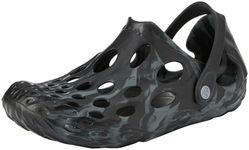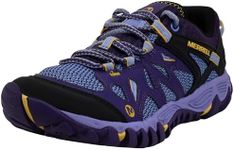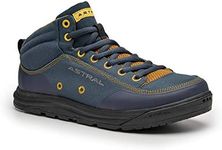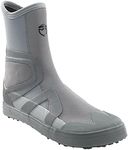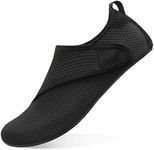Buying Guide for the Best Kayaking Shoes
Choosing the right kayaking shoes is essential for comfort, safety, and performance on the water. The right pair of shoes will protect your feet from sharp objects, provide good traction on slippery surfaces, and keep your feet warm and dry. When selecting kayaking shoes, consider the environment you'll be kayaking in, the type of kayaking you'll be doing, and your personal comfort preferences. Here are some key specifications to consider when choosing kayaking shoes.MaterialThe material of kayaking shoes is important because it affects durability, comfort, and water resistance. Common materials include neoprene, mesh, and rubber. Neoprene is great for insulation and keeping your feet warm in cold water. Mesh is breathable and dries quickly, making it ideal for warm weather. Rubber soles provide excellent grip and protection. Choose a material based on the water temperature and conditions you'll be kayaking in.
Sole TypeThe sole type of kayaking shoes determines the level of traction and protection. Thin soles offer better sensitivity and feel for the kayak, which is useful for whitewater kayaking. Thick soles provide more protection and are better for rocky or uneven terrain. If you plan to portage or walk on rough surfaces, opt for shoes with thicker, more durable soles. For in-kayak comfort, thinner soles might be preferable.
Fit and ComfortFit and comfort are crucial for long hours on the water. Kayaking shoes should fit snugly but not too tight, allowing for some movement without causing blisters. Look for shoes with adjustable straps or laces to ensure a secure fit. Consider trying on shoes with the same type of socks you plan to wear while kayaking. Comfort features like padded insoles and arch support can make a big difference during extended trips.
Drainage and DryingDrainage and drying capabilities are important to keep your feet dry and comfortable. Shoes with good drainage allow water to escape quickly, preventing your feet from staying wet. Quick-drying materials help reduce the risk of blisters and discomfort. Look for shoes with drainage holes or mesh panels that facilitate water flow and drying. This is especially important if you'll be frequently getting in and out of the water.
InsulationInsulation is a key factor if you'll be kayaking in cold water or during cooler weather. Insulated shoes, often made with neoprene, help keep your feet warm by trapping heat. The thickness of the insulation can vary, with thicker options providing more warmth. If you plan to kayak in cold conditions, choose shoes with adequate insulation to prevent your feet from getting cold and numb.
WeightThe weight of kayaking shoes can affect your comfort and performance. Lighter shoes are generally more comfortable for long periods and can make it easier to move around in the kayak. However, lighter shoes may offer less protection and durability. If you prioritize agility and comfort, opt for lighter shoes. If you need more protection and durability, slightly heavier shoes might be a better choice.
